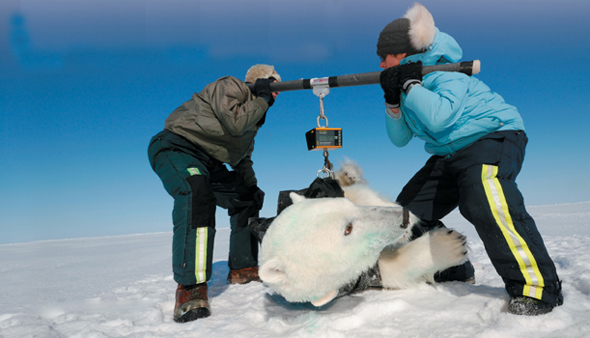Performing Biological Investigations
 How is the metric system important in science?
How is the metric system important in science?
During your study of biology, you will have the opportunity to perform scientific investigations. Biologists, like other scientists, rely on a common system of measurement and practice safety procedures when conducting studies. As you study and experiment, you will become familiar with scientific measurement and safety procedures.
Scientific Measurement Because researchers need to replicate one another's experiments, and because many experiments involve gathering quantitative data, scientists need a common system of measurement.  Most scientists use the metric system when collecting data and performing experiments. The metric system is a decimal system of measurement whose units are based on certain physical standards and are scaled on multiples of 10. A revised version of the original metric system is called the International System of Units, or SI. The abbreviation SI comes from the French Le Système International d'Unités.
Most scientists use the metric system when collecting data and performing experiments. The metric system is a decimal system of measurement whose units are based on certain physical standards and are scaled on multiples of 10. A revised version of the original metric system is called the International System of Units, or SI. The abbreviation SI comes from the French Le Système International d'Unités.
Because the metric system is based on multiples of 10, it is easy to use. Notice in Figure 1–15 how the basic unit of length, the meter, can be multiplied or divided to measure objects and distances much larger or smaller than a meter. The same process can be used when measuring volume and mass. You can learn more about the metric system in Appendix B.
BUILD Vocabulary
Prefixes The SI prefix milli- means “thousandth.” Therefore, 1 millimeter is one-thousandth of a meter, and 1 milligram is one-thousandth of a gram.

FIGURE 1–15 The Metric System Scientists usually use the metric system in their work. This system is easy to use because it is based on multiples of 10. In the photo, biologists in Alaska weigh a small polar bear. Predict What unit of measurement would you use to express the bear's mass?
Table of Contents
- Formulas and Equations
- Applying Formulas and Equations
- Mean, Median, and Mode
- Estimation
- Using Measurements in Calculations
- Effects of Measurement Errors
- Accuracy
- Precision
- Comparing Accuracy and Precision
- Significant Figures
- Calculating With Significant Figures
- Scientific Notation
- Calculating With Scientific Notation
- Dimensional Analysis
- Applying Dimensional Analysis





